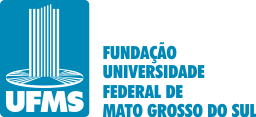Use este identificador para citar ou linkar para este item:
https://repositorio.ufms.br/handle/123456789/12157Registro completo de metadados
| Campo DC | Valor | Idioma |
|---|---|---|
| dc.creator | RAFAELA MOTTA LINHARES | - |
| dc.date.accessioned | 2025-07-08T12:12:09Z | - |
| dc.date.available | 2025-07-08T12:12:09Z | - |
| dc.date.issued | 2025 | pt_BR |
| dc.identifier.uri | https://repositorio.ufms.br/handle/123456789/12157 | - |
| dc.description.abstract | Management practices for the recovery of degraded pastures, or even improvements in the management of low-productivity areas in Brazil, can increase livestock productivity and reduce carbon emissions. Thus, the objective of this study was to evaluate carbon emissions, temperature, and soil moisture in different pasture management systems (extensive livestock farming, forage planting as cover, and reserve area) in the municipality of Chapadão do Sul, Mato Grosso do Sul. This experiment was conducted at the Campo Alegre Farm, in the municipality of Chapadão do Sul, Mato Grosso do Sul. Three different land use management systems were evaluated: (i) rotation between Urochloa decumbens and soybeans, in which the forage is used exclusively as cover, and is subsequently desiccated for direct soybean cultivation; (ii) area subjected to intensive cattle grazing for at least 10 years; and (iii) permanent preservation area with typical characteristics of cerrado vegetation as a parameter of an environment in equilibrium. The assessments took place in August 2024, a dry season in the region. In each of the areas, 20 PVC rings were installed for the in situ assessment of soil carbon emissions (FCO₂). The data obtained were subjected to a comparison analysis of means to identify the managements that resulted in the highest and lowest CO₂ emissions. Additionally, a principal component analysis (PCA) was constructed in the same statistical environment, with the objective of exploring the relationships between the measured variables and the different soil managements. The results obtained show that the reserve area with native Cerrado forest presented the highest soil CO₂ emissions, standing out as an ecosystem active in soil respiration. In contrast, the area destined for extensive livestock farming presented the lowest average CO₂ emissions, also associated with lower soil temperatures and humidity, indicating lower biological activity. The highest average soil temperature was recorded in the area covered by Urochloa, while soil moisture was higher in areas with vegetation cover, reinforcing the role of soil management in conserving moisture. | - |
| dc.language.iso | pt_BR | pt_BR |
| dc.publisher | Fundação Universidade Federal de Mato Grosso do Sul | pt_BR |
| dc.rights | Acesso Aberto | pt_BR |
| dc.subject.classification | Ciências Exatas e da Terra | pt_BR |
| dc.title | emissão de carbono, temperatura e umidade do solo em diferentes manejos agropecuários | pt_BR |
| dc.type | Trabalho de Conclusão de Curso | pt_BR |
| dc.contributor.advisor1 | ALDAIR FELIX DA SILVA | - |
| dc.description.resumo | Avaliar a Emissão de carbono ,temperatura e umidade do solo em diferentes sistema de pecuária envolvendo sistemas de produção gado extensivo, em rotação de soja e pasto em comparativo com áreas de preservação. Logo, encontrar sistemas de produção que emitem menos carbono. | pt_BR |
| dc.publisher.country | null | pt_BR |
| dc.publisher.initials | UFMS | pt_BR |
| Aparece nas coleções: | Agronomia - Bacharelado (CPCS) | |
Arquivos associados a este item:
| Arquivo | Tamanho | Formato | |
|---|---|---|---|
| 24566.pdf | 1,29 MB | Adobe PDF | Visualizar/Abrir |
Os itens no repositório estão protegidos por copyright, com todos os direitos reservados, salvo quando é indicado o contrário.

